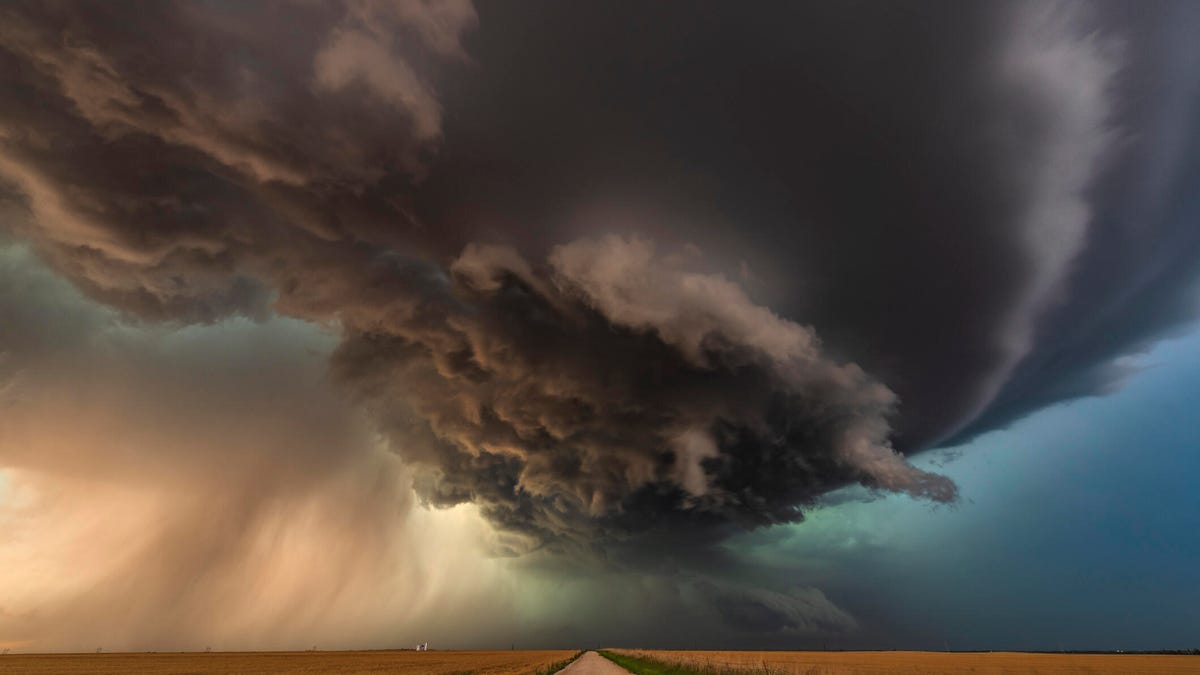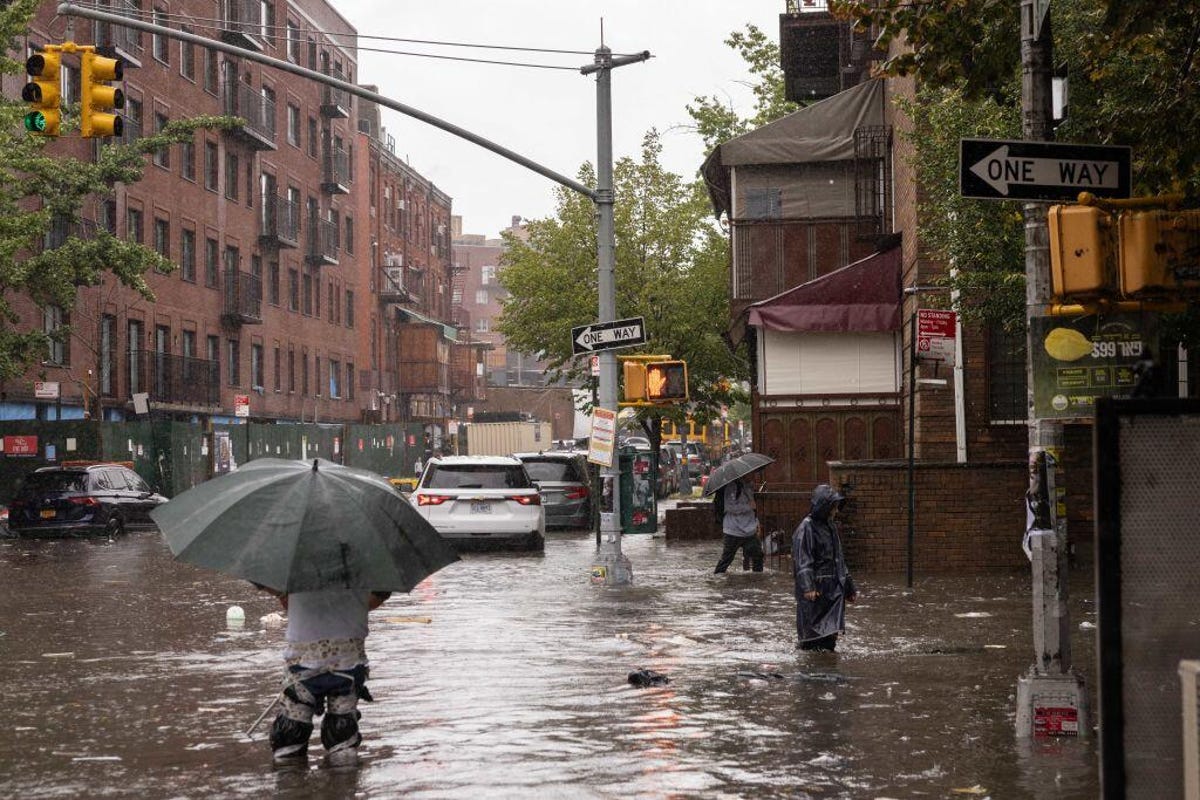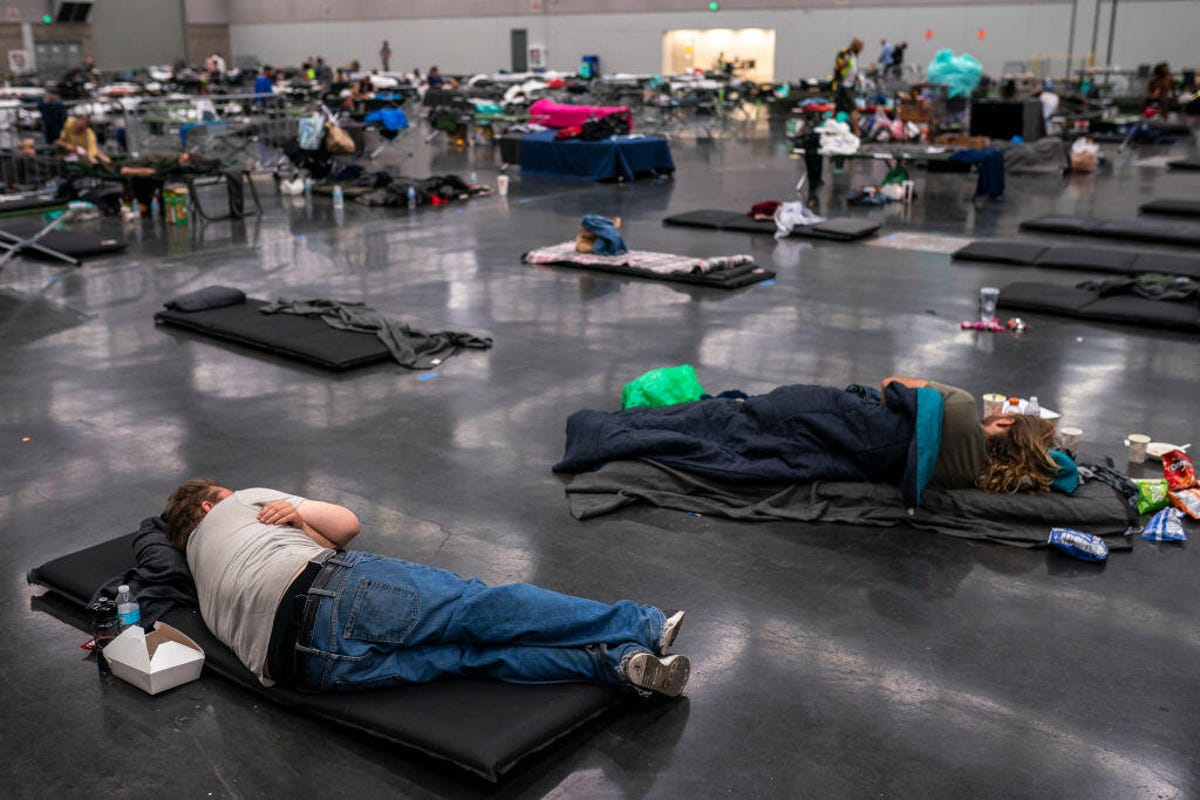Technologies
Wild Weather Ahead: Here’s What’s Happening After the Hottest Year on Record
The impacts of the climate crisis are being felt around the world. Here’s how you can weather the incoming extreme weather in 2024.

We just lived through the hottest year since records began more than a century ago, but looking back at 2023, it might not be defined in our memories by extreme heat.
That’s because it’s unlikely to be the only hottest year that we experience. Our climate is changing, growing warmer due to the emissions from burning fossil fuels, and our weather is changing with it. It’s possible, even, that this year may turn out to be hotter still.
In March, scientists from the EU’s Copernicus Climate Change Service issued a statement saying that February 2024 was the hottest February according to its records, which stretch back to 1940. This came shortly after they confirmed in early January that, as expected, 2023 was indeed the hottest year on record. Temperatures closed in on the critical 1.5-degree Celsius rise above preindustrial levels, after which we will see irreversible damage to the planet. But instead of being a freak outlier, the extreme heat we’re currently experiencing is something we’ll need to be prepared to deal with on a much more regular basis, along with storms, floods and drought.
A key trend highlighted by the US government’s Fifth National Climate Assessment, published last November, was that extreme weather events across the country are becoming both more frequent and more severe due to climate change. It pointed to an increase in heatwaves and wildfires in the West over the past few decades, the increased drought risk in the Southwest over the past century and more extreme rainfall east of the Rockies. Hurricanes too, have been intensifying, as those who have found themselves in the path of a storm know all too well.
You’ll need to be prepared. Extreme weather is going to have a widespread impact on industry, society and individuals. Last year in the US there were 25 extreme weather events with losses amounting to over $1 billion that resulted in the deaths of 464 people. People lost their homes, saw personal property damaged or suffered mental and physical health issues.
Now that 2024 is upon us, we’re staring down the barrel of another potentially record-setting hot year. If there’s a silver lining, it’s that the US is now better prepared than ever and we know what steps you can take to better deal with these unwelcome events. When it comes to weather, forewarned is forearmed.
The US has been taking active steps. The Biden administration has provided funding to build resilient communities, and a new (as of September 2023) National Climate Resilience Framework, which should provide the US with a whole range of protections. These include conserving water resources, modernizing and strengthening the electric grid against weather and disasters and building infrastructure to protect communities and ecosystems from sea level rise, tidal flooding, hurricanes and storm surges.
At home and in your community, you can take other steps, including preparing your home for wildfires and flooding and recognizing signs of heat-related health issues. This way, when wild weather comes calling, its impact on our homes, health and livelihoods is minimized.
Forecast 2024
Last year’s heat was no anomaly. It’s part of a long-term trend: The last 10 years have been the 10 warmest on record, according to NASA, with most of the Earth’s warming taking place over the last 40 years. Most forecasters are anticipating yet another year of extreme heat ahead.
«If we look at the forecast for the next three months in the long range, it’s suggesting that the trend that we’re seeing in baseline warming could continue, and so 2024 could rival 2023 for being the hottest year on record, which is very scary,» says Chloe Brimicombe, a heatwave researcher at the University of Graz.
Some of the extreme weather we experienced in the latter half of last year and will continue to experience in the first half of this year is a result of El Niño, a cyclical climate event that sees unusually warm ocean waters that has a knock-on effect of warmer temperatures and increased rainfall across the southern part of the US. For instance, temperatures in Death Valley, California, peaked at 128 degrees Fahrenheit in July, while forecasters predict a much colder, wetter winter for Southern states.
NOAA’s seasonal forecast predicts El Niño will result in warmer temperatures in northern parts of the US stretching into February of this year, with some government weather forecasters estimating its effects may be felt through June.

While meteorologists are able to make long-term predictions about El Niño, other climate-related predictions are trickier. «All things told, we’re going to see an increased prevalence of heat events across the globe, but we can’t tell right now exactly where that will be,» says Andy Hoell, a climate scientist at NOAA.
What we do know, he adds, is that the climate crisis can compound events such as extreme heat or extreme rainfall to make them more likely or more severe.
In the past, it wasn’t always easy to draw direct links between extreme weather events and climate change. But huge improvements in attribution science (the ability to specifically identify emissions as the cause for unusually dramatic weather) in recent years have changed the game. The World Weather Attribution program, based at Imperial College London, has now completed nine studies on droughts, heatwaves, wildfires and heavy rainfall in North America. «Every study found that climate change made the event more intense and more likely,» says Ben Clarke, a researcher at WWA.
The speed at which climate scientists are able to identify human-caused climate change as the culprit for extreme weather has also dramatically improved. Last year alone, Climate Central was able to attribute record-breaking spring heat in the western US, and ongoing extreme heat stretching through the summer in Texas and Florida, to climate change as it was happening. «It’s much more impactful as far as our understanding of what climate change really is if we can make that connection in real time,» says Andrew Pershing, vice president of science at Climate Central, a climate science analysis non-profit.
Thanks to attribution science, we can confidently point to a heatwave we’ve experienced and say whether climate change played a role in making it happen. But it also helps us to recognize that extreme weather events we’re experiencing are part of a pattern – one that can’t be broken without tackling the root causes of the climate crisis. «Until the world moves away from fossil fuels and reduces emissions to net zero,» says Clarke, «extreme weather events in North America will continue to become more intense, more dangerous and more deadly.»
Even if you live in a region that hasn’t yet directly been impacted by a climate-linked weather event, you’re not off the hook.
«As the climate continues to warm, most areas will be at an increased risk of some types of climate-linked extreme weather,» says Russell Vose, chief of the Monitoring and Assessment Branch at NOAA’ National Centers for Environmental Information and one of the NCA’s authors. «Perhaps the best example is extreme heat – it can occur anywhere.»
He points to the scorching heat dome that descended on the Pacific Northwest in June and July 2021, which was unprecedented in the historical record. The unpredictable nature of such extreme heat means that no regions are marked as safe.
In fact, a region that has been lucky enough to not yet experience an extreme heat event is more likely to experience one in the future and suffer more greatly due to lack of preparedness, according to a study published by scientists from Bristol University last April.
Scientists are more concerned about the ability of people in areas that don’t usually get intensely hot to cope when their turn comes. «What worries me would be something in the Upper Midwest or the Northeast that just hasn’t had a major heat event for a few years,» says Pershing. «I think we kind of lose a little bit of that muscle memory.»
Weather’s unequal impacts
The weather might not discriminate when it comes to who gets hit, but that doesn’t mean its impacts are experienced equally by all groups across American society.
«Certain groups are simply more vulnerable to extreme events due to geographic, socioeconomic or demographic factors,» says Vose. He points to the extreme rainfall brought by Hurricane Harvey in 2017, which led to a large number of homes being flooded in Harris County, Texas, with a disproportionate impact on low-income Hispanic neighborhoods.
When a heatwave hits, it will feel hotter in high-density urban environments that are more likely to be occupied by people of color or people living in poverty than in more spread-out neighborhoods or rural areas. Then some are homeless and can’t access health care. They have little ability to protect themselves, no matter how much warning they get about an incoming heatwave. This makes these groups much more vulnerable to the health risks of extreme heat.
Heat researchers are extremely concerned about people who live in housing not resistant to warm temperatures, says Brimicombe, who points out that those who rent are especially at risk. «If you’re a tenant, you have less ability to adapt your house to extreme heat than if you’re a homeowner,» she says. «And that also means young families, because babies are vulnerable to extreme heat.»
Not only are economically disadvantaged communities in the US more susceptible to feeling the worst impacts of extreme weather, but they have also done the least to contribute towards the climate crisis in the first place. A study published last August revealed that the wealthiest households in the US are historically responsible for 40% of the country’s climate emissions.
Meanwhile, these same households have more tools at their disposal to protect themselves from the impact of climate-related weather events. Back in 2019, The New York Times reported that wealthy California residents were banding together to hire private firefighters to protect them from the impacts of wildfires.
The Biden administration is well aware that marginalized and minority groups are hardest hit by climate change, including extreme weather. At the beginning of his term, the president set up the White House Environmental Justice Advisory Council, made up of leading experts from the US climate justice community.
Last September the group published its policy recommendations urging the government to ensure climate disasters do not further or exacerbate harm to vulnerable populations and communities.

«Disaster relief should never be the cause of deepening inequality in any neighborhood, region, or Tribal community,» the council wrote in its recommendations. «When disaster hits, the goal of government should be that the people hit the hardest should emerge stronger and more secure than before, not the opposite.»
It recommended a number of measures that would help protect people in case of extreme weather including the creation of a low-cost national flood insurance and the establishment of a «Just Relocation Fund» that would provide communities hit by climate impacts with a relocation process based on a dignity framework with respect for their human rights.
The White House has yet to respond to the recommendations, but if it does act on them this would hopefully prevent a repeat of the aftermath of Hurricane Katrina in 2005, in which Black communities were allocated less money to rebuild their housing, resulting in a lawsuit against the federal government.
Through the Bipartisan Infrastructure Law and other initiatives, the Biden administration is investing heavily in adaptation, mitigation and resilience measures designed to protect all Americans from the impacts of climate-linked extreme weather. As with all funding, people may have to wait some time to feel the full impact of that funding. In the meantime, there are a number of steps you can take to keep yourself safe in the months ahead.
How to weather the weather, whatever the weather
Summer might seem like a long way off right now, but those sizzling days are on the horizon.
Intense heat poses some scary risks to our health, including heat cramps, heat exhaustion and heat stroke, which can be life-threatening. It’s important to familiarize yourself with the signs so that you’ll recognize them in yourself and others, and can therefore seek medical attention if necessary.
Remember that heat is more likely to adversely affect older people, children and babies, and those with preexisting health conditions. There may be cooling centers or other well-air-conditioned places in your community where you can take refuge – if you do, consider taking elderly or vulnerable neighbors with you. «Look out for friends and families,» said Brimicombe. «Don’t be complacent.»
The British writer and fellwalker Alfred Wainwright is widely credited as coining the phrase, «there’s no such thing as bad weather, only unsuitable clothing.» Wainwright, who died in 1991, did not live through the exact kind of consistently bad weather we’re experiencing in this era of extreme heat, but that doesn’t mean we have nothing to learn from him. In the midst of a heatwave, it’s best to wear loose-fitting clothes in light colors, rather than black, which absorbs the heat.
Make sure you stay hydrated and try to spend as little time as possible outside in the sun. Try to block sunlight from warming your house, and consider buying reflectors to place in your windows that can help keep the heat out. At nighttime, take note of when it might be cooler outside than in, and use this to your advantage by opening doors and windows to let the internal temperature of your house regulate. Fans can be effective, but at very high temperatures they’re likely to just start pushing the hot air around – in which case you should, sparingly and without putting too much pressure on the grid, resort to air conditioning, or moving to your local cooling center.

Remember that global warming is worldwide, so the same heat warnings apply even if you plan to travel to other parts of the world over the summer. The heat waves that hit the US in the summer of 2023 also impacted areas of Europe, including popular vacation spots in the Mediterranean. Countries including Greece, Spain and Italy were all affected by wildfires that resulted in the evacuation of locals and tourists alike from some areas and islands.
The surge in Europe-bound American tourists that occurred in 2023 is expected to continue this year, but if you’re planning to be among them it’s important not to travel without comprehensive insurance. Likewise, if you’re traveling in the peak months of July and August, be prepared to adjust your itinerary in case of extreme heat to ensure you’re not putting your health at risk. This may mean spending more time indoors than you’d planned for the sake of your health.
For other types of extreme weather that may hit your property such as wildfires, storms or floods, it may be useful to have an evacuation plan. You should prepare an emergency evacuation bag, also known as a go bag or a bug-out bag. Don’t forget to plan for your pets. The National Fire Prevention Association has a handy guide on how to prepare your home for wildfires.
One of the easiest but most important things you can do is keep an eye on long- and short-term weather forecasts. The silver lining for people in the US, says Pershing, is that the country has great weather forecasting capabilities and the channels to communicate incoming events to people so you can prepare. «The gaps are really whether you take it seriously yourself,» he says.
So for anyone who does take it seriously, be sure to read our tips on how to prepare yourself and your home for wildfires, hurricanes, floods and storms.
Here are some additional resources:
- Natural Disaster Insurance: How to Protect Your Home
- Pet Disaster Prep: Take These Steps to Keep Your Pets Safe
- Emergency Prep: 3 Tips to Recover Important Documents
- 16 Emergency Apps for Wildfires, Earthquakes and Other Disasters
- Hurricane Season Is Underway. Pack These Emergency Bag Essentials Before the Next Storm
- Climate Change Is Intensifying Severe Weather. Take These 4 Steps to Fortify Your Home
For even more details on natural disasters and how to prepare beforehand or respond after an event takes place, check out https://www.ready.gov/.
Technologies
iPhone 17 Preorders Spike and Overall Phone Sales Aren’t Slowing Down Despite Tariffs
Global smartphone shipments saw a notable increase in the third quarter of 2025. Plus, preorders for Apple’s new iPhone 17 beat out the iPhone 16.

Despite tariffs and market uncertainty, global smartphone shipments increased 2.6% in the third quarter of 2025, compared to the same time last year, according to the International Data Corporation. Additionally, preorders for the iPhone 17, which launched last month, outpaced last year’s iPhone 16.
These increased sales include premium phones like the latest iPhones and Samsung foldables, suggesting yet again that pricier phones still sell in periods of economic strain. It’s a remarkable achievement, says IDC senior research director Nabila Popal, citing shrewd financing options as the reason people keep buying these high-end phones, which cost anywhere from $800 to nearly $2,000.
«[Phone makers] have mastered the art of innovation not only in hardware and software to entice upgrades but also in removing purchase friction. They have flawlessly combined cutting-edge devices with innovative financing models and aggressive trade-in programs that make the upgrading decision a ‘no-brainer’ for consumers,» Popal said in an IDC press release.
Apple sold 58.6 million iPhones this quarter, an increase of 2.9% over the same period in 2024, with more preorders for the iPhone 17 series than its predecessor. But Samsung wasn’t far behind, with its Galaxy Z Fold 7 and Galaxy Z Flip 7 selling better than all of the company’s prior foldables. The company still reigns atop the phone market with 61.4 million phones sold, representing 19% of the market in the third quarter of this year — an increase of 6.3% from the same period last year. Meanwhile, Apple lands slightly behind Samsung with 18.2% market share this quarter.
The other phone makers trailing Apple and Samsung are, in order: Xiaomi, with 13.5% of the market; Transsion, with 9%; and Vivo with 8.9%. The remaining companies in the phones industry, from Chinese stalwarts like Oppo and Honor to Motorola and Google, make up the remaining 31.4% of the market for the quarter. All told, 322.7 million phones were sold, up from 314.6 million in the third quarter of 2024, according to IDC.
IDC’s findings for the third quarter continue the small but steady growth of phone sales over the year, including a modest 1% increase in the preceding three months — which includes the April deadline when President Donald Trump unveiled sweeping tariffs. In the second quarter, IDC cited midrange devices like Samsung’s Galaxy A36 and other phones that started incorporating AI. But even persistent tariffs haven’t slowed down people’s appetites for pricier phones in the third quarter.
Technologies
Today’s NYT Mini Crossword Answers for Tuesday, Oct. 14
Here are the answers for The New York Times Mini Crossword for Oct. 14.

Looking for the most recent Mini Crossword answer? Click here for today’s Mini Crossword hints, as well as our daily answers and hints for The New York Times Wordle, Strands, Connections and Connections: Sports Edition puzzles.
Today’s Mini Crossword has an odd vertical shape, with an extra Across clue, and only four Down clues. The clues are not terribly difficult, but one or two could be tricky. Read on if you need the answers. And if you could use some hints and guidance for daily solving, check out our Mini Crossword tips.
If you’re looking for today’s Wordle, Connections, Connections: Sports Edition and Strands answers, you can visit CNET’s NYT puzzle hints page.
Read more: Tips and Tricks for Solving The New York Times Mini Crossword
Let’s get to those Mini Crossword clues and answers.
Mini across clues and answers
1A clue: Smokes, informally
Answer: CIGS
5A clue: «Don’t have ___, man!» (Bart Simpson catchphrase)
Answer: ACOW
6A clue: What the vehicle in «lane one» of this crossword is winning?
Answer: RACE
7A clue: Pitt of Hollywood
Answer: BRAD
8A clue: «Yeah, whatever»
Answer: SURE
9A clue: Rd. crossers
Answer: STS
Mini down clues and answers
1D clue: Things to «load» before a marathon
Answer: CARBS
2D clue: Mythical figure who inspired the idiom «fly too close to the sun»
Answer: ICARUS
3D clue: Zoomer around a small track
Answer: GOCART
4D clue: Neighbors of Norwegians
Answer: SWEDES
Technologies
Watch SpaceX’s Starship Flight Test 11
-

 Technologies3 года ago
Technologies3 года agoTech Companies Need to Be Held Accountable for Security, Experts Say
-

 Technologies3 года ago
Technologies3 года agoBest Handheld Game Console in 2023
-

 Technologies3 года ago
Technologies3 года agoTighten Up Your VR Game With the Best Head Straps for Quest 2
-

 Technologies4 года ago
Technologies4 года agoVerum, Wickr and Threema: next generation secured messengers
-

 Technologies4 года ago
Technologies4 года agoGoogle to require vaccinations as Silicon Valley rethinks return-to-office policies
-

 Technologies4 года ago
Technologies4 года agoBlack Friday 2021: The best deals on TVs, headphones, kitchenware, and more
-

 Technologies4 года ago
Technologies4 года agoOlivia Harlan Dekker for Verum Messenger
-

 Technologies4 года ago
Technologies4 года agoiPhone 13 event: How to watch Apple’s big announcement tomorrow
